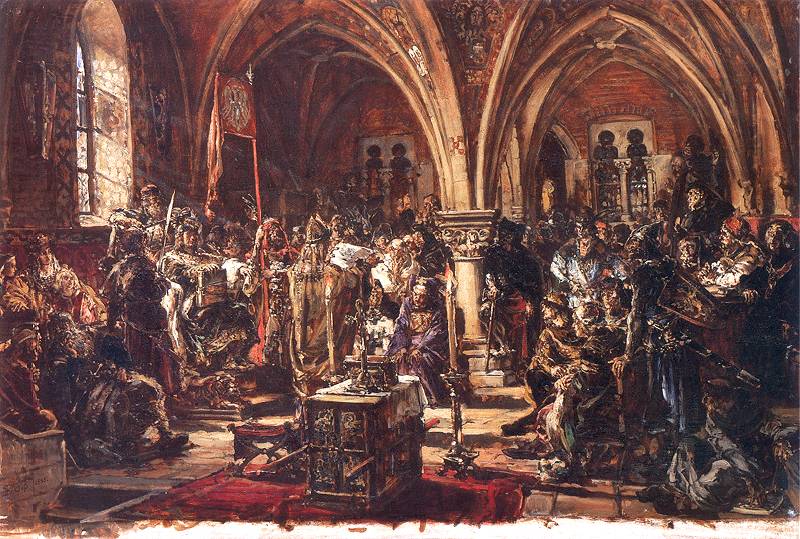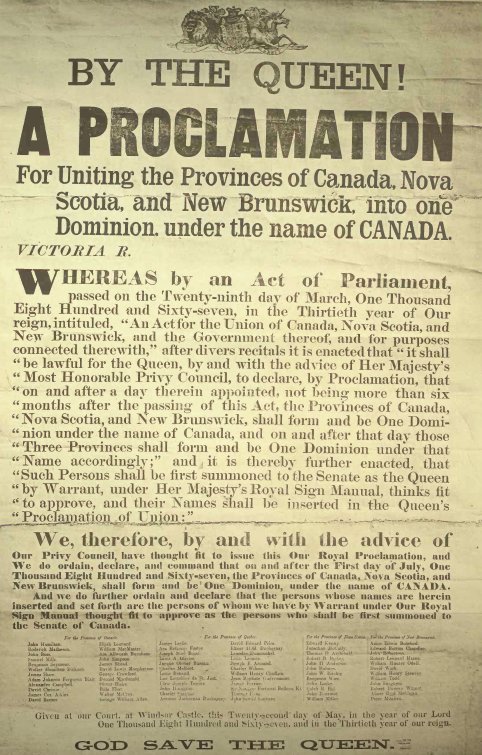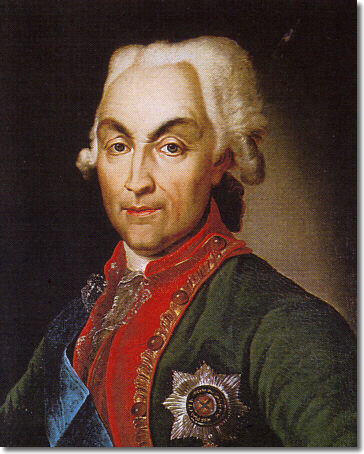|
Confederated Sejm
Confederated sejm () was a form of sejm in the Polish–Lithuanian Commonwealth in the 18th century. After 1764, sejms were frequently ''confederated''. Under rules of confederation, decisions were made by the majority of deputy votes cast, and so the privilege of '' liberum veto'' did not apply. Examples of confederated Sejms: Repnin Sejm, Great Sejm, Silent Sejm. See also * Confederation A confederation (also known as a confederacy or league) is a political union of sovereign states united for purposes of common action. Usually created by a treaty, confederations of states tend to be established for dealing with critical issu ... * '' Sejmik'' * '' Liberum veto'' * Constitution of May 3, 1791 References Polish confederations Sejm of the Polish–Lithuanian Commonwealth {{Legislature-stub ... [...More Info...] [...Related Items...] OR: [Wikipedia] [Google] [Baidu] |
Sejm
The Sejm (), officially known as the Sejm of the Republic of Poland (), is the lower house of the bicameralism, bicameral parliament of Poland. The Sejm has been the highest governing body of the Third Polish Republic since the Polish People's Republic, transition of government in 1989. Along with the upper house of parliament, the Senate of Poland, Senate, it forms the national legislature in Poland known as Parliament of Poland#National Assembly, National Assembly (). The Sejm comprises 460 Member of parliament, deputies (singular or ) elected every four years by Universal suffrage, universal ballot. The Sejm is presided over by a Speaker of parliament, speaker, the "Marshal of the Sejm" (). In the Kingdom of Poland (1385–1569), Kingdom of Poland, the term ''Sejm'' referred to an entire two-Chambers of parliament, chamber parliament, comprising the Chamber of Deputies (), the Senate and the King. It was thus a three-estate parliament. The 1573 Henrician Articles strengthe ... [...More Info...] [...Related Items...] OR: [Wikipedia] [Google] [Baidu] |
Polish–Lithuanian Commonwealth
The Polish–Lithuanian Commonwealth, also referred to as Poland–Lithuania or the First Polish Republic (), was a federation, federative real union between the Crown of the Kingdom of Poland, Kingdom of Poland and the Grand Duchy of Lithuania, existing from 1569 to 1795. This state was among the largest, most populated countries of 16th- to 18th-century Europe. At its peak in the early 17th century, the Commonwealth spanned approximately and supported a multi-ethnic population of around 12 million as of 1618. The official languages of the Commonwealth were Polish language, Polish and Latin Language, Latin, with Catholic Church, Catholicism as the state religion. The Union of Lublin established the Commonwealth as a single entity on 1 July 1569. The two nations had previously been in a personal union since the Union of Krewo, Krewo Agreement of 1385 (Polish–Lithuanian union) and the subsequent marriage of Queen Jadwiga of Poland to Grand Duke Jogaila of Lithuania, who was cr ... [...More Info...] [...Related Items...] OR: [Wikipedia] [Google] [Baidu] |
Confederation (Poland)
A confederation (also known as a confederacy or league) is a political union of sovereign states united for purposes of common action. Usually created by a treaty, confederations of states tend to be established for dealing with critical issues, such as defence, foreign relations, internal trade or currency, with the central government being required to provide support for all its members. Confederalism represents a main form of intergovernmentalism, defined as any form of interaction around states that takes place on the basis of sovereign independence or government. The nature of the relationship among the member states constituting a confederation varies considerably. Likewise, the relationship between the member states and the general government and their distribution of powers varies. Some looser confederations are similar to international organisations. Other confederations with stricter rules may resemble federal systems. These elements of such confederations, the inter ... [...More Info...] [...Related Items...] OR: [Wikipedia] [Google] [Baidu] |
Majority
A majority is more than half of a total; however, the term is commonly used with other meanings, as explained in the "#Related terms, Related terms" section below. It is a subset of a Set (mathematics), set consisting of more than half of the set's elements. For example, if a group consists of 31 individuals, a majority would be 16 or more individuals, while having 15 or fewer individuals would not constitute a majority. A majority is different from, but often confused with, a Plurality (voting), plurality, which is a subset larger than any other subset but not necessarily more than half the set. See the "#Related terms, Related terms" section below for details. Majority vote In parliamentary procedure, a majority always means precisely "more than half". Other common definitions (e.g. the frequent 50%+1) may be misleading #Common errors, (see "Common errors" below). Depending on the parliamentary authority used, there may be a difference in the total that is used to calculat ... [...More Info...] [...Related Items...] OR: [Wikipedia] [Google] [Baidu] |
Vote
Voting is the process of choosing officials or policies by casting a ballot, a document used by people to formally express their preferences. Republics and representative democracies are governments where the population chooses representatives by voting. The procedure for identifying the winners based on votes varies depending on both the country and the political office. Political scientists call these procedures electoral systems, while mathematicians and economists call them social choice rules. The study of these rules and what makes them good or bad is the subject of a branch of welfare economics known as social choice theory. In smaller organizations, voting can occur in many different ways: formally via ballot to elect others for example within a workplace, to elect members of political associations, or to choose roles for others; or informally with a spoken agreement or a gesture like a raised hand. In larger organizations, like countries, voting is generally confi ... [...More Info...] [...Related Items...] OR: [Wikipedia] [Google] [Baidu] |
Liberum Veto
The ''liberum veto'' (Latin for "free veto") was a parliamentary device in the Polish–Lithuanian Commonwealth. It was a form of unanimity voting rule that allowed any member of the Sejm (legislature) to force an immediate end to the current session and to nullify any legislation that had already been passed at the session by shouting either ''Sisto activitatem!'' (Latin: "I stop the activity!") or ''Nie pozwalam!'' ( Polish: "I do not allow!"). The rule was in place from the mid-17th century to the late 18th century in the Sejm's parliamentary deliberations. It was based on the premise that since all of the Polish–Lithuanian noblemen were equal, every measure that came before the Sejm had to be passed unanimously. The ''liberum veto'' was a key part of the political system of the Commonwealth, strengthening democratic elements and checking royal power and went against the European-wide trend of having a strong executive ( absolute monarchy). Many historians hold that the '' ... [...More Info...] [...Related Items...] OR: [Wikipedia] [Google] [Baidu] |
Repnin Sejm
The Repnin Sejm () was a Sejm (session of the parliament) of the Polish–Lithuanian Commonwealth that took place between 1767 and 1768 in Warsaw. This session followed the Sejms of 1764 to 1766, where the newly elected King of Poland, Stanisław August Poniatowski, attempted with some successes to push through reforms to strengthen the government of the Commonwealth. These reforms were viewed as dangerous by Poland's neighbors, who preferred a weak Commonwealth and did not want to see it threaten their own political and military aspirations. The Russian Empire sent ambassador Nikolai Repnin, who became the driving force behind the Sejm proceedings. The Repnin Sejm marked one of the important milestones in increasing Polish dependence on the Russian Empire, and turning it into a Russian protectorate. This dependent position was bluntly spelled out in Nikita Ivanovich Panin's letter to King Poniatowski, in which he made it clear that Poland was now in the Russian sphere of influen ... [...More Info...] [...Related Items...] OR: [Wikipedia] [Google] [Baidu] |
Great Sejm
The Great Sejm, also known as the Four-Year Sejm (Polish language, Polish: ''Sejm Wielki'' or ''Sejm Czteroletni''; Lithuanian language, Lithuanian: ''Didysis seimas'' or ''Ketverių metų seimas'') was a Sejm of the Polish–Lithuanian Commonwealth, Sejm (parliament) of the Polish–Lithuanian Commonwealth that was held in Warsaw between 1788 and 1792. Its principal aim became to restore sovereignty to, and reform, the Commonwealth politically and economically. The Sejm's great achievement was the adoption of the Constitution of 3 May 1791, often described as Europe's first modern written national constitution, and the world's second, after the United States Constitution. The Polish Constitution was designed to redress long-standing political defects of the federation, federative Polish-Lithuanian Commonwealth and its system of Golden Liberty, Golden Liberties. The Constitution introduced political equality between townspeople and szlachta, nobility and placed the peasants under ... [...More Info...] [...Related Items...] OR: [Wikipedia] [Google] [Baidu] |
Silent Sejm
Silent Sejm (), also known as the Mute Sejm, is the name given to the session of the Sejm parliament of the Polish–Lithuanian Commonwealth of 1 February 1717 held in Warsaw. A civil war in the Commonwealth was used by the Russian Tsar Peter the Great as an opportunity to intervene as a mediator. It marked the end of Augustus II of Poland's attempts to create an absolute monarchy in Poland, and the beginning of the Russian Empire's increasing influence and control over the Commonwealth. Background Augustus II the Strong of the Saxon House of Wettin was elected to the throne of Poland in 1697. The Wettins, used to absolute rule, attempted to govern through intimidation and the use of force, which led to a series of conflicts between Wettin supporters and opponents (including another pretender to the Polish throne, King Stanisław Leszczyński). Those conflicts often took the form of confederations – legal rebellions against the king permitted under the Golden Free ... [...More Info...] [...Related Items...] OR: [Wikipedia] [Google] [Baidu] |
Sejmik
A sejmik (, diminutive of ''sejm'', occasionally translated as a ''dietine''; ) was one of various local parliaments in the history of Poland and history of Lithuania. The first sejmiks were regional assemblies in the Kingdom of Poland (before 1572), though they gained significantly more influence in the later era of the Polish–Lithuanian Commonwealth (18th century). Sejmiks arose around the late 14th and early 15th centuries and existed until the end of the Commonwealth in 1795, following the partitions of the Commonwealth. In a limited form, some sejmiks existed in partitioned Poland (1795–1918), and later in the Second Polish Republic (1918–1939). In modern Poland, since 1999, the term has revived with the ''voivodeship sejmiks'' (''sejmiki województwa''), referring to the elected councils of each of the 16 voivodeships. The competencies of sejmiks varied over time, and there were also geographical differences. Often, numerous different types of sejmiks coexisted in ... [...More Info...] [...Related Items...] OR: [Wikipedia] [Google] [Baidu] |
Liberum Veto
The ''liberum veto'' (Latin for "free veto") was a parliamentary device in the Polish–Lithuanian Commonwealth. It was a form of unanimity voting rule that allowed any member of the Sejm (legislature) to force an immediate end to the current session and to nullify any legislation that had already been passed at the session by shouting either ''Sisto activitatem!'' (Latin: "I stop the activity!") or ''Nie pozwalam!'' ( Polish: "I do not allow!"). The rule was in place from the mid-17th century to the late 18th century in the Sejm's parliamentary deliberations. It was based on the premise that since all of the Polish–Lithuanian noblemen were equal, every measure that came before the Sejm had to be passed unanimously. The ''liberum veto'' was a key part of the political system of the Commonwealth, strengthening democratic elements and checking royal power and went against the European-wide trend of having a strong executive ( absolute monarchy). Many historians hold that the '' ... [...More Info...] [...Related Items...] OR: [Wikipedia] [Google] [Baidu] |
Constitution Of May 3, 1791
The Constitution of 3 May 1791, titled the Government Act, was a written constitution for the Polish–Lithuanian Commonwealth that was adopted by the Great Sejm that met between 1788 and 1792. The Commonwealth was a dual monarchy comprising the Crown of the Kingdom of Poland and the Grand Duchy of Lithuania; the new constitution was intended to address political questions following a period of political agitation and gradual reform that began with the Convocation Sejm of 1764 and the election that year of the Commonwealth's last monarch, Stanisław August Poniatowski. It was the first codified, modern constitution (possessing checks and balances and a tripartite separation of powers) in Europe and the second in the world, after that of the United States. The Constitution sought to implement a more effective constitutional monarchy, introduced political equality between townspeople and nobility, and placed the peasants under the government's protection, mitigating the worst a ... [...More Info...] [...Related Items...] OR: [Wikipedia] [Google] [Baidu] |





